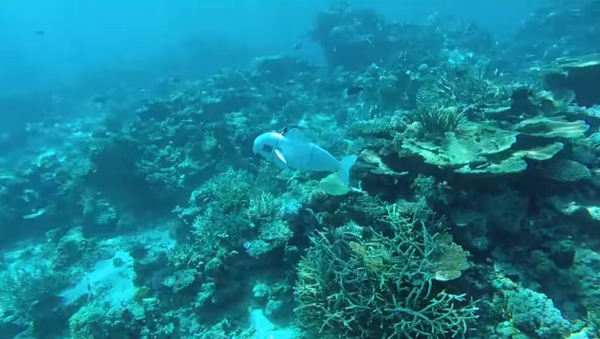In the study, developers describe how SoFi, the fish-spying machine, is able to navigate through the rough seas all the while keeping fellow fishies from suspecting anything, well, fishy.
"For us, this fish is magical," Daniela Rus, director of the Computer Science and Artificial Intelligence Laboratory at MIT and study lead, told the Los Angeles Times. "We imagine someday it might help us uncover more mysteries from the amazing underwater world that we know so little about."
Measuring about a foot and a half long and weighing just 3.5 pounds, SoFi, whose name is a portmanteau of "soft robotic fish," is able to handle water depths of about 60 feet and can swim for an estimated time of 40 minutes before needing a battery recharge.
Researchers were able to modify a Super Nintendo controller to navigate the undercover fishbot to swim up, down, left, right and forward. The study noted that the controller "speaks" to the fish by transmitting vibrations through the ocean at high frequencies, which translate into different commands. Officials also equipped the spy with a fisheye lens, Linux computer and a hydraulic pump that allows SoFi to move its soft rubber tail in a fish-like motion.
"The fish robot can become a platform for biologists to study marine life and use it for controlled studies," researcher Robert Katzschmann told Gizmodo. "Not only in a tank, but in natural habitats like coral reefs and other environments that are of interest."
"In the aftermath of publishing the paper I'm sure biologists will tell us more use cases," Katzschmann added. "There's lots we have never seen."
Considering many parts of the bot are 3D-printed, participants told the Times that making it would be inexpensive and could ultimately lead to creating a school of robo-fish to explore the ocean.
According to MIT News, the next step researchers have in mind for their creation is to improve its speed and the design of the body and tail.




